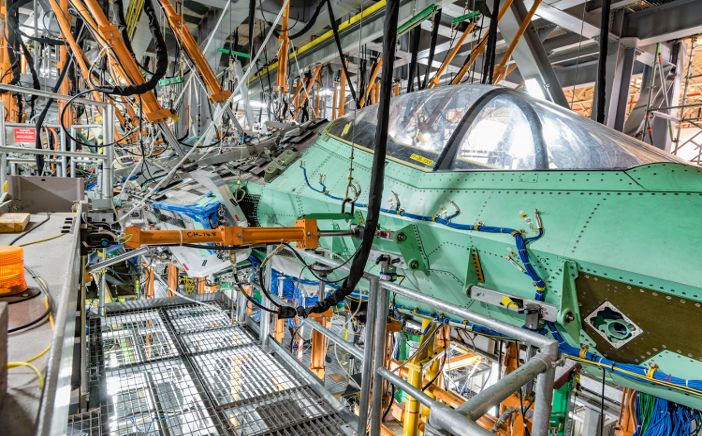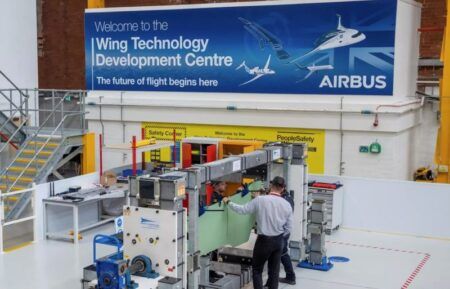The F-35A’s full-scale durability test AJ-1 airframe, designed for the conventional take-off and landing (CTOL) variant of the fighter, has completed its third life testing – equivalent to 24,000 flying hours – at BAE Systems’s unique testing facility in Brough, East Yorkshire, in the UK.
The airframe has been subjected to the range of loads it would be expected to experience in actual flight, with durability tests carried out to simulate real-life fleet usage based on projected operational requirements. The F-35A durability test airframe will now undergo further detailed inspections in the USA.
The only one of its kind in the UK, BAE Systems’s durability test rig is fitted with more than 20 miles of wiring, 2,500 strain gauges and 160 loading actuators, which are attached to the airframe during testing.
Kathy Nesmith, F-35 Joint Program Office airframe team lead, said, “The F-35 program requires a service life of 8,000 flight hours. This is verified through durability testing to two lifetimes, or 16,000 hours. Completing third life testing on the F-35A durability article will provide us the data to enable the warfighter to maintain and sustain this aircraft beyond 2050.”
Andy Prendergast, operations manager for structural and dynamic test at BAE Systems, said, “This testing has pushed the F-35A airframe to its limits to make sure it will fly safely and effectively throughout its lifetime.
“We have continually checked the airframe for any signs of stresses and strains and reported findings back to the program so structural improvements could be made, if required, long before any issues appear in the flying fleet.”
November 9, 2017





